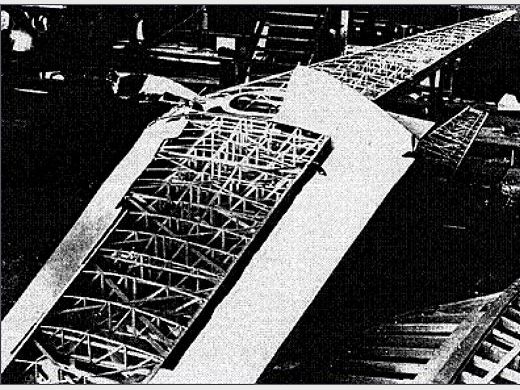| Constructeur(s) | | Constructeur | Construits | | Aircraft Rigging San Diego High School, Californie. | -- | | Nombre total de constructions | -- |
|
|
| Infos techniques | The wing was a full cantilever wooden structure made in two 26' sections bolted together at the center. Tapered in planform and thickness, the wing offered both strutural and aerodynamic advantages. Main spars running the full length were "I" beams with plywook webs and spruce cap strips. The NACA airfoil section was chosen on the basis of moment coefficient. Tapered ribs were made of 1/4" spruce with 1/8" diagonals. The wing and all control surfaces were covered with fabric.
Lateral and logitudinal control was accomplished by means of a combination aileron and elevator control device which functioned in the same manner as the control wheel in a conventional aircraft. The unit was linked by bellcrank and push rods to two 14' moveable surfaces in the trailing edge of the wing on each side of the ship. When the control wheel was turned left or right, the simultaneous control device produced a movement up on one side and down on the other 14' aileron. When the wheel was moved backward or forward, the ailerons moved up or down together and functioned as an elevator.
Directional control was provided for by 7' movable surfaces at the outboard trailing edge of the wing. Operating on a drag principle, and working independently of each other, they were actuated by cable and foot control, and took the place of a rudder. The sweep back and dihedral of the wing added further stability to the ship. |
| Histoire résumée | Designed by San Diego High School student Charles L. Freel, the Freel Flying Wing was a development of a successful 36" wingspan experimental model built under supervision of Letain T. Kitterege, aircraft rigging class instructor. Begun in 1933, construction of the full-scale wing was completed in 1935. Flight tests were conducted by Mr. Kitterege and Charles Freel. |
| Liens personnalités | Pas de personnalité associée. |



